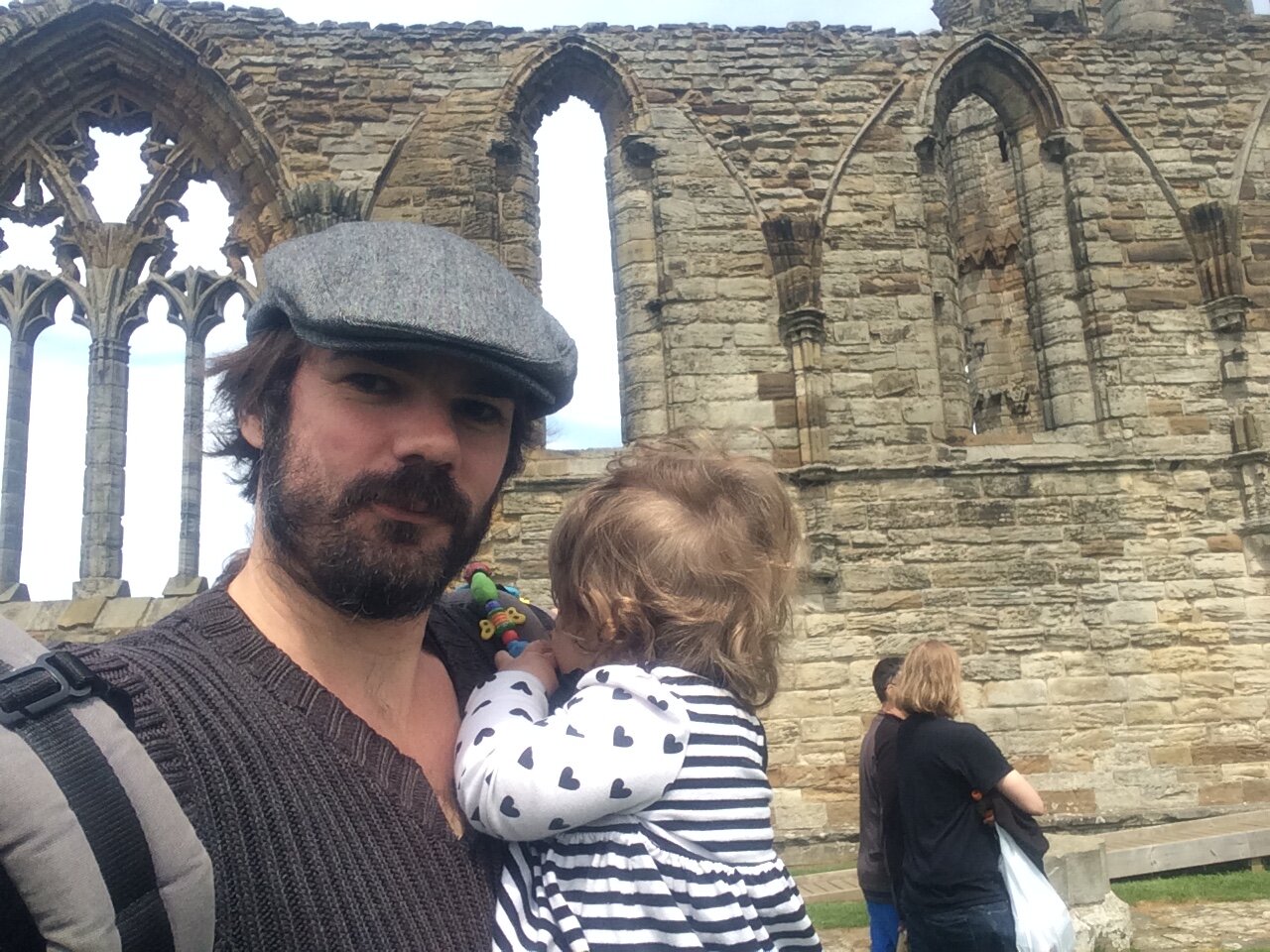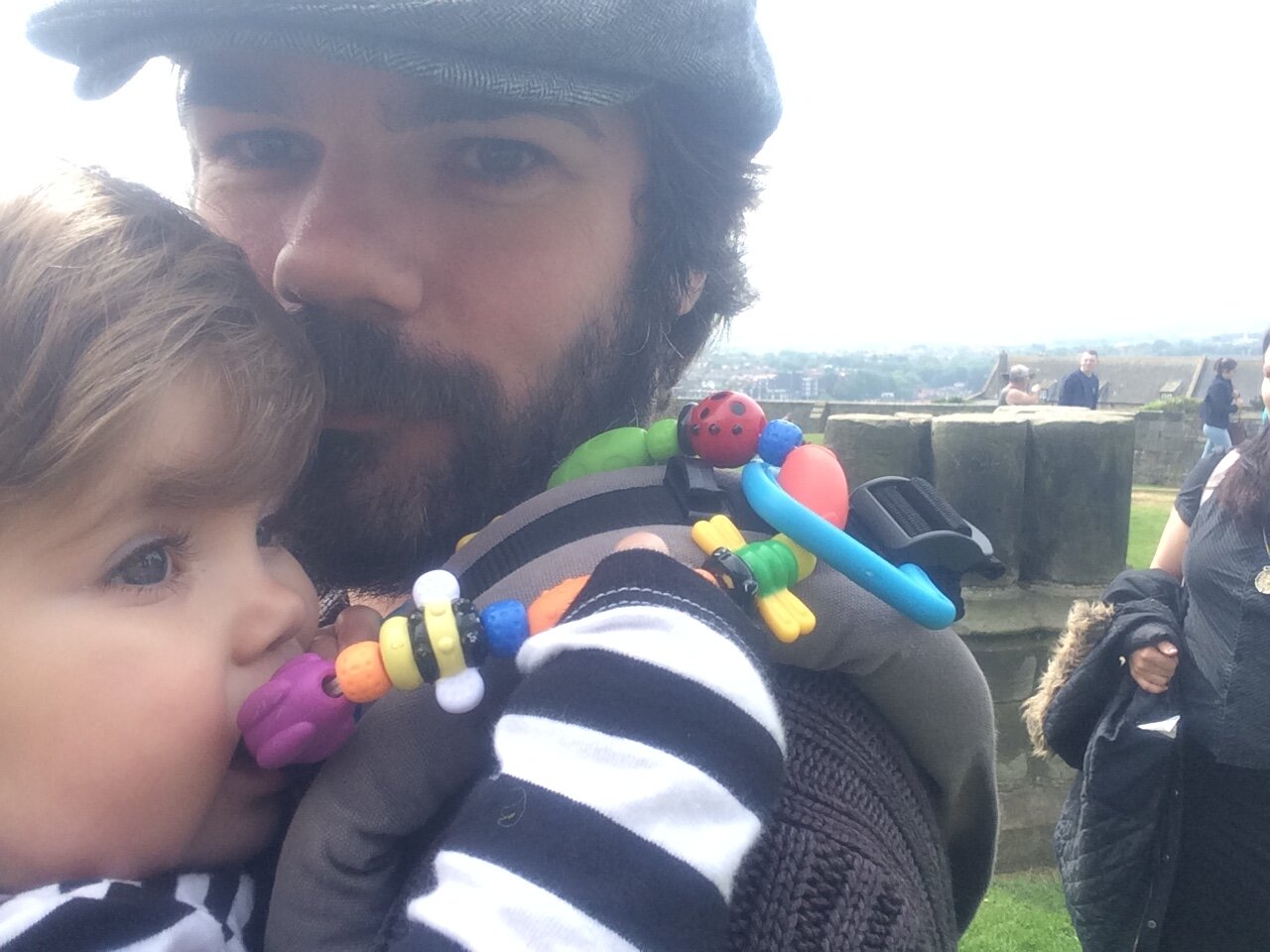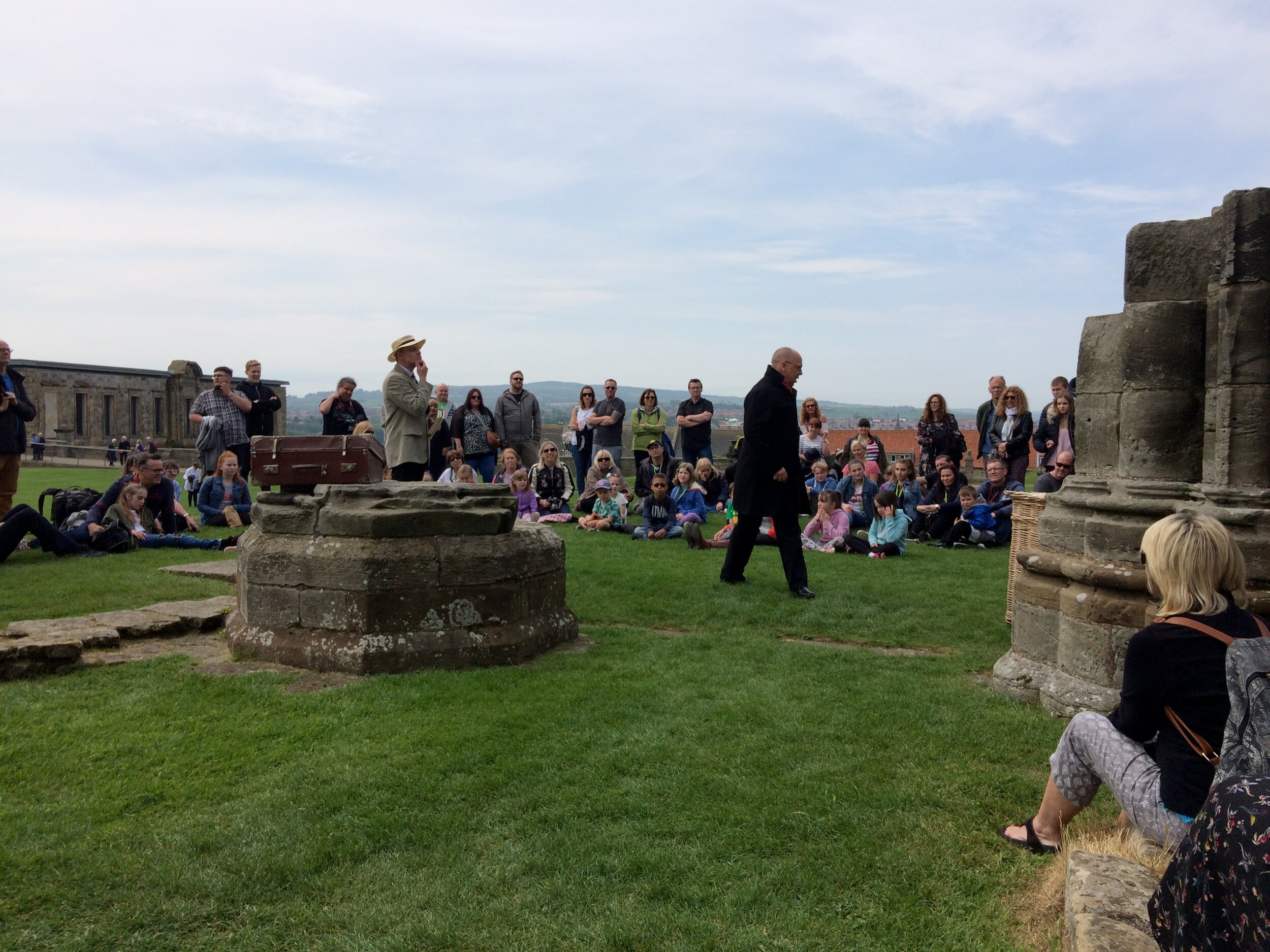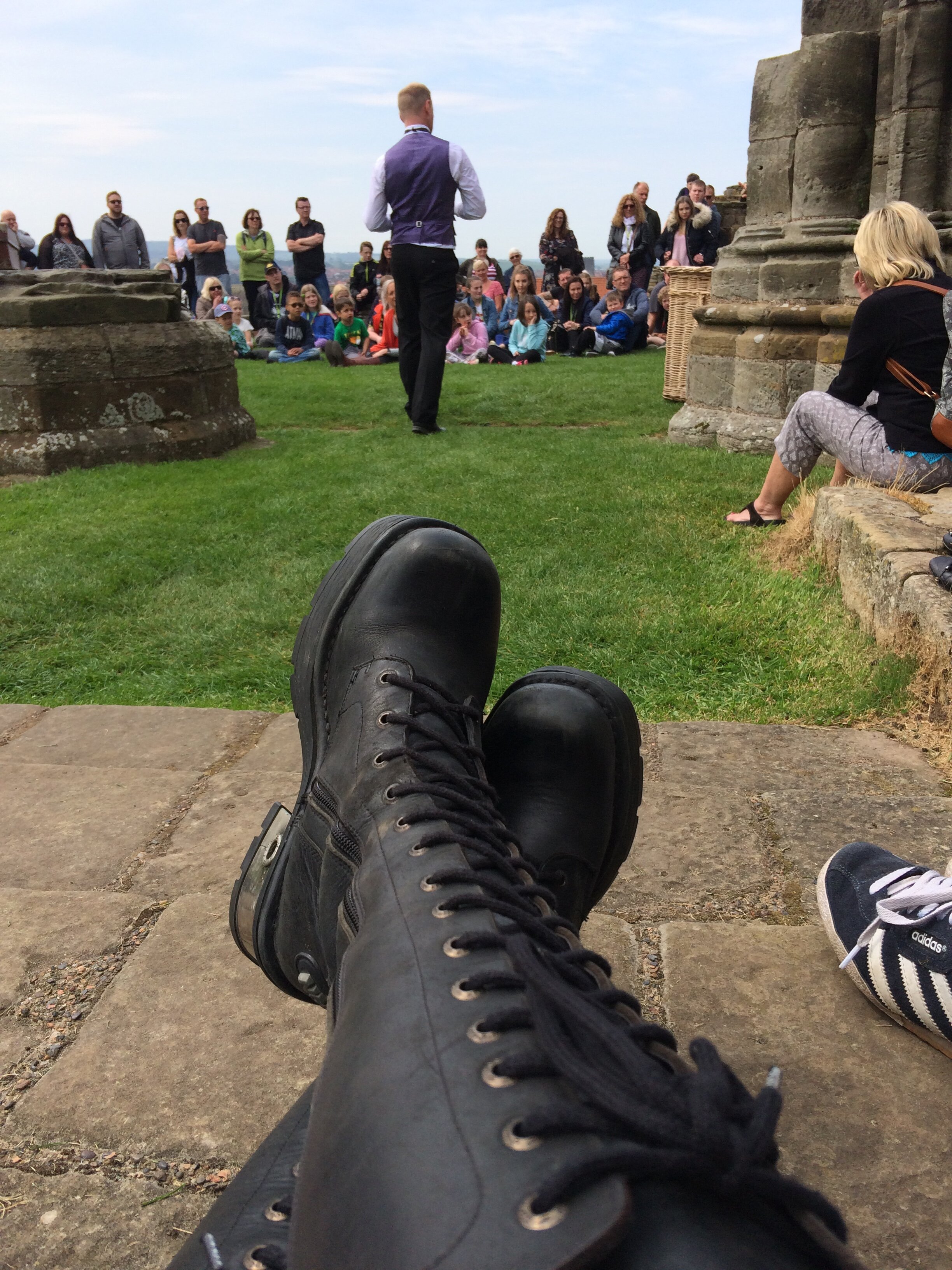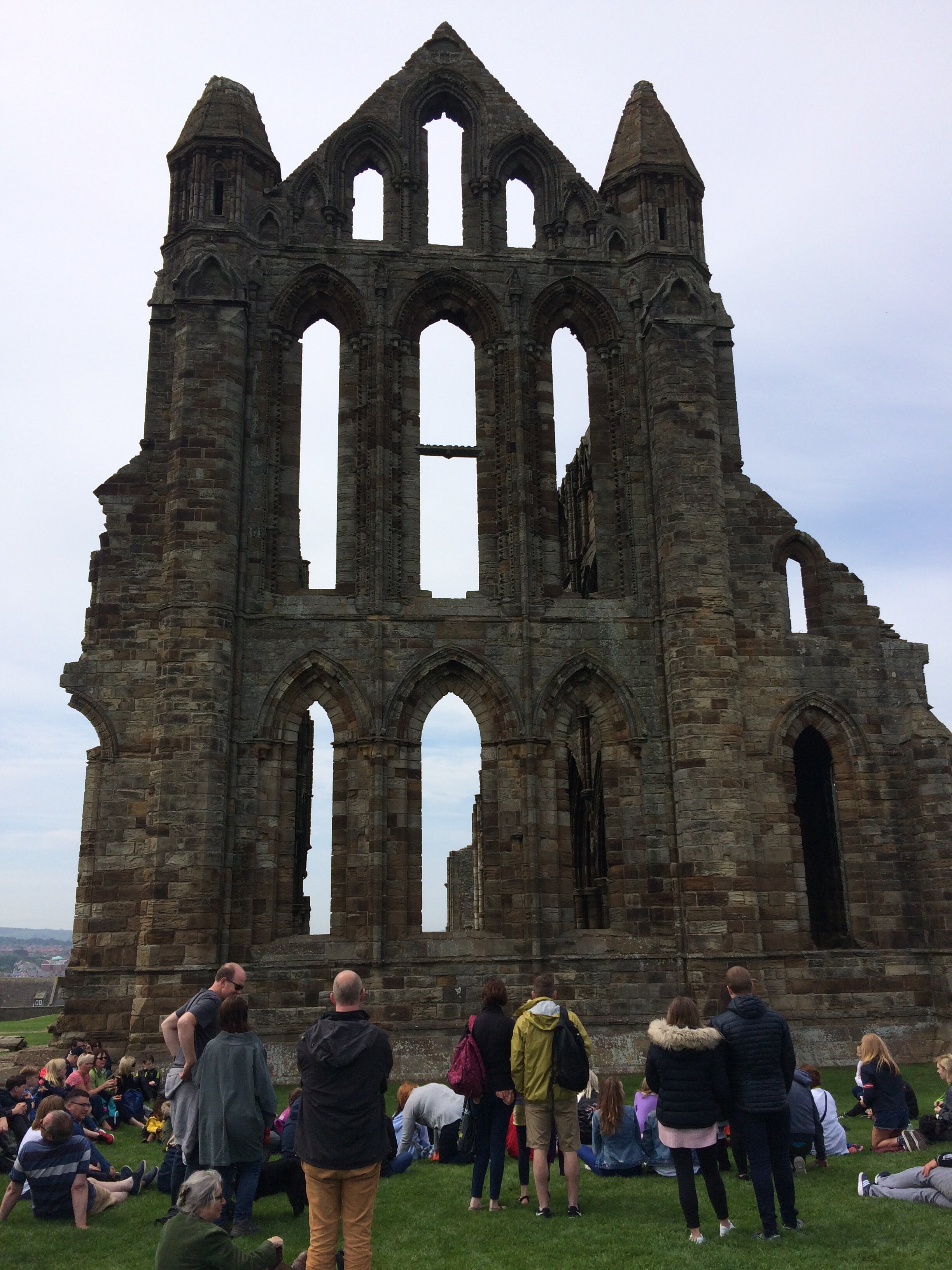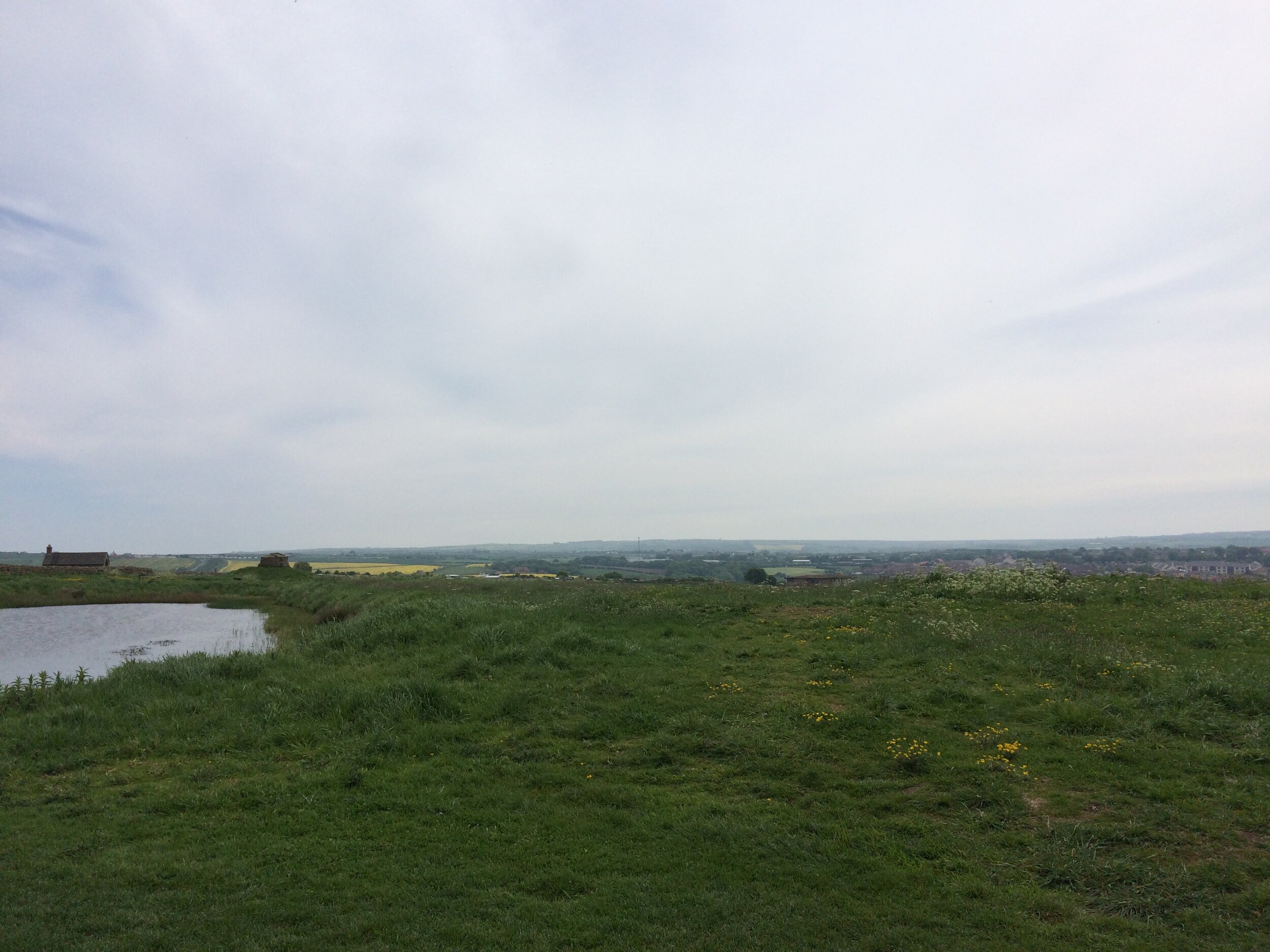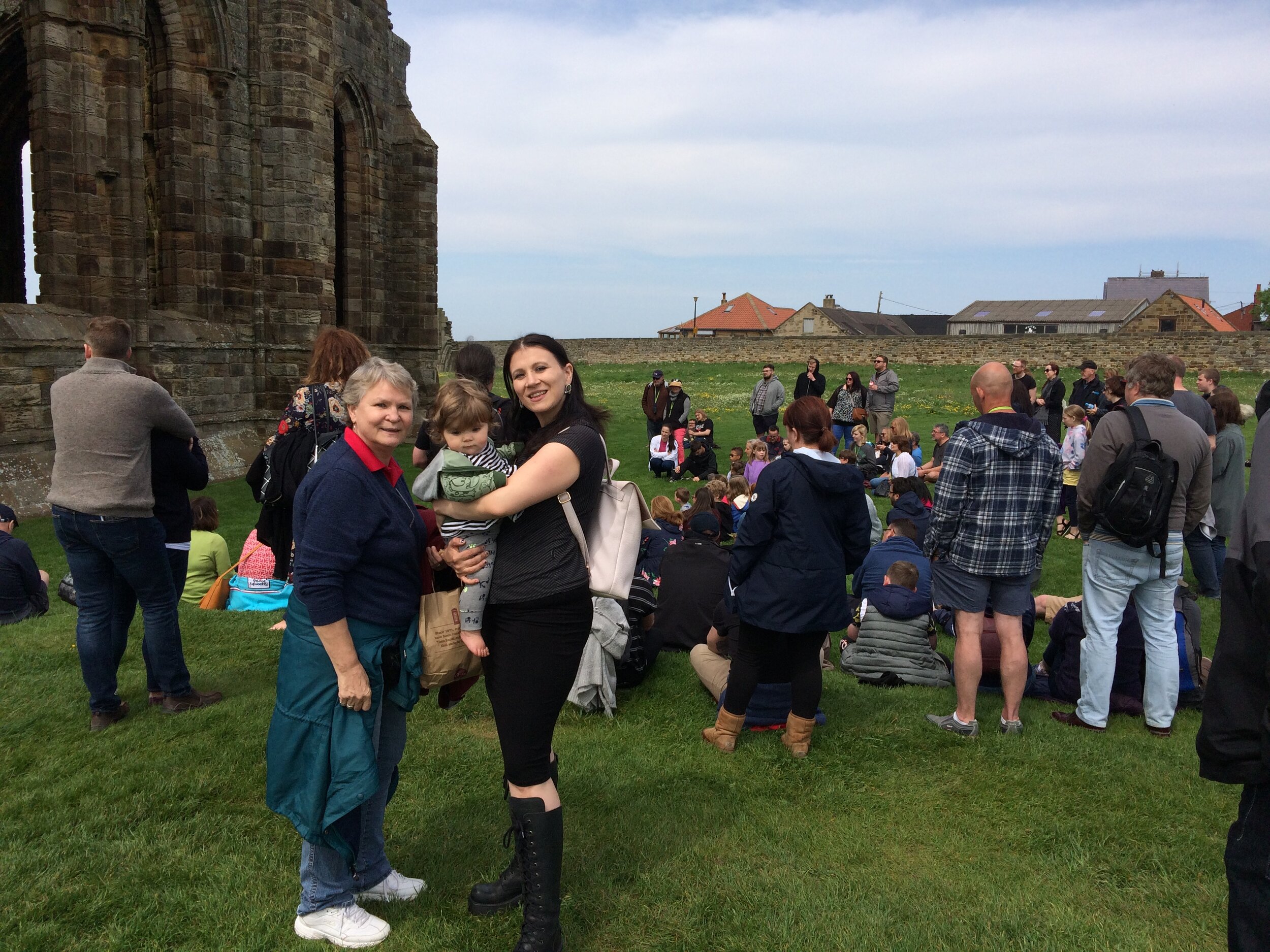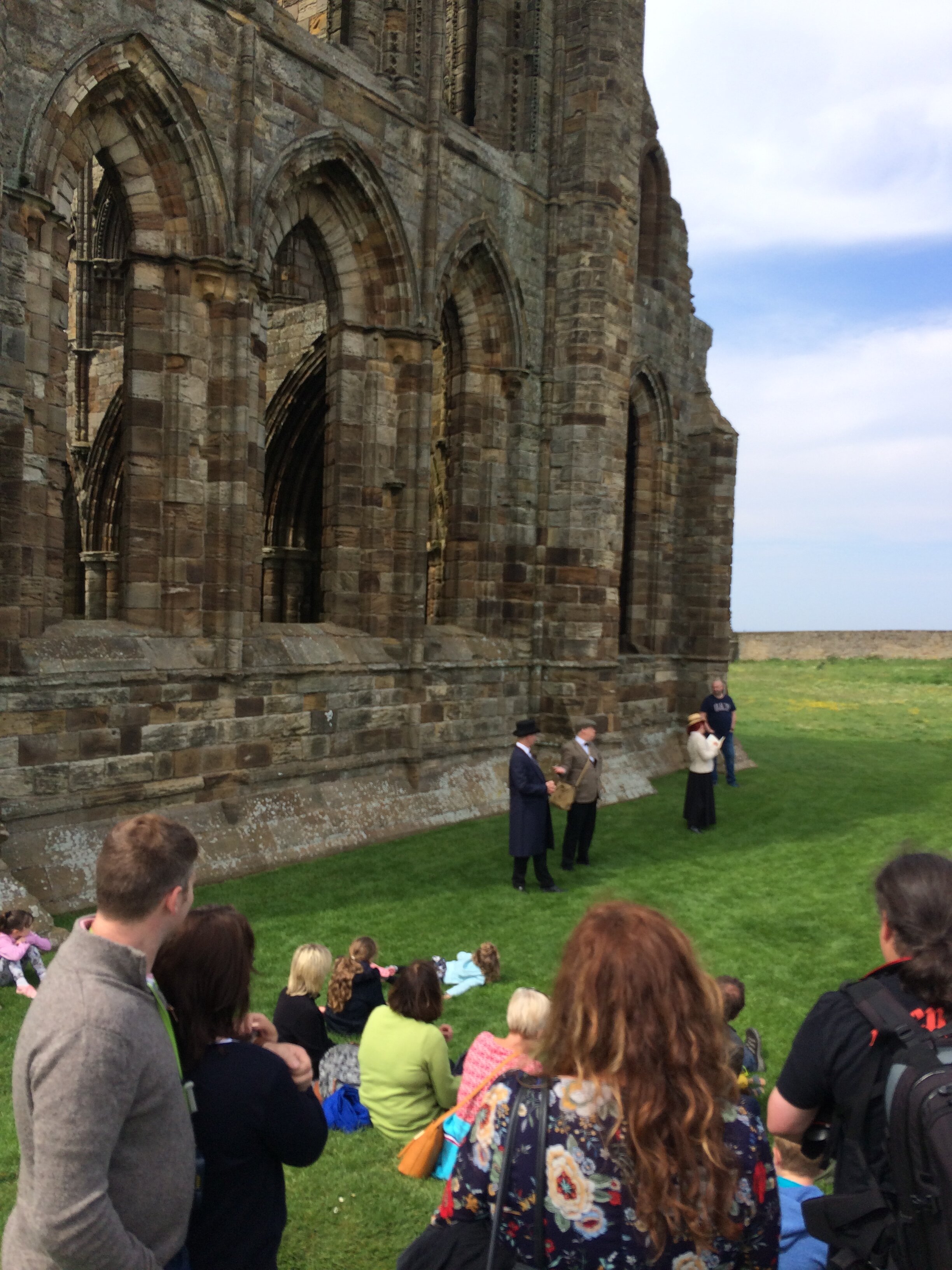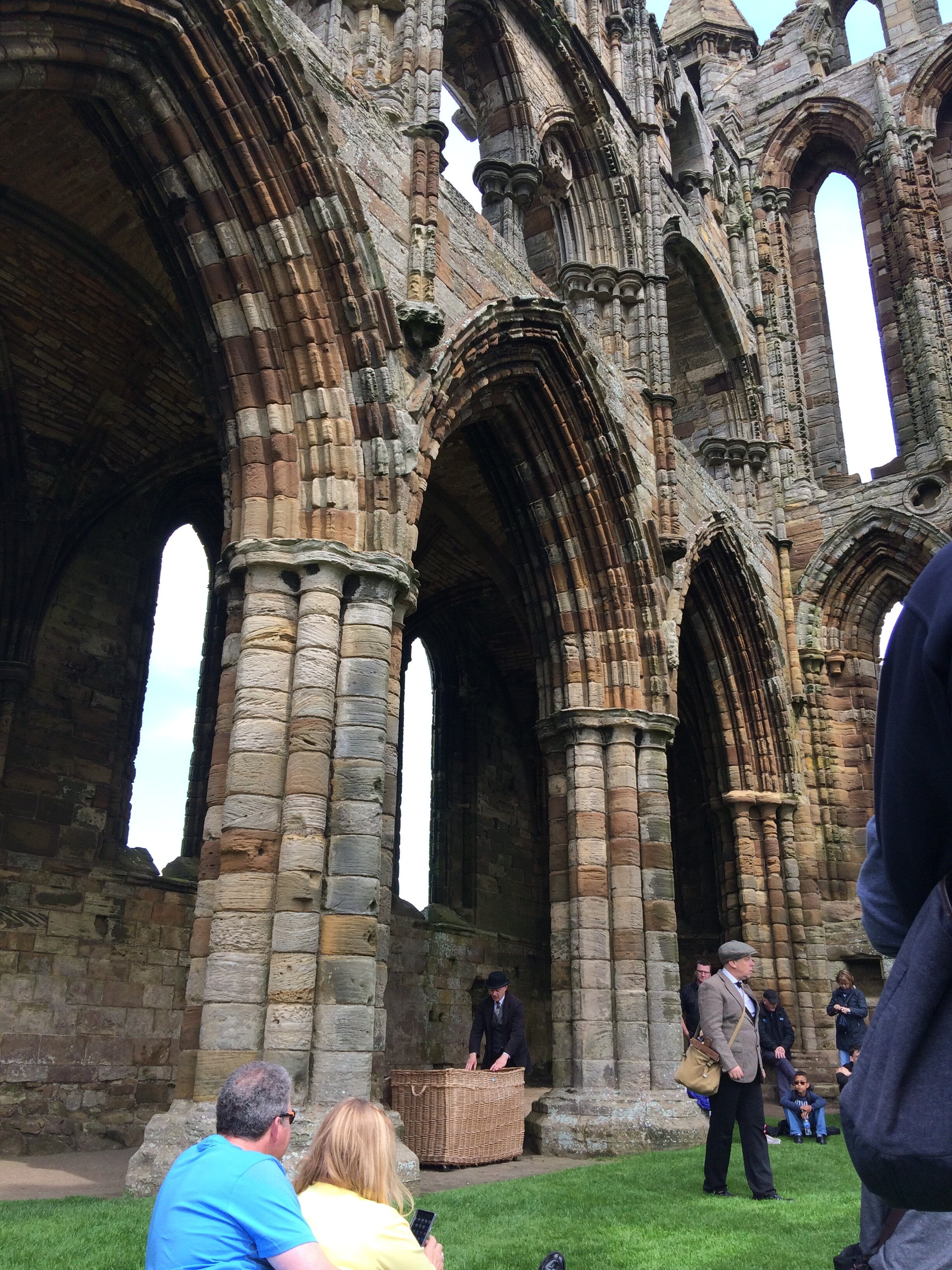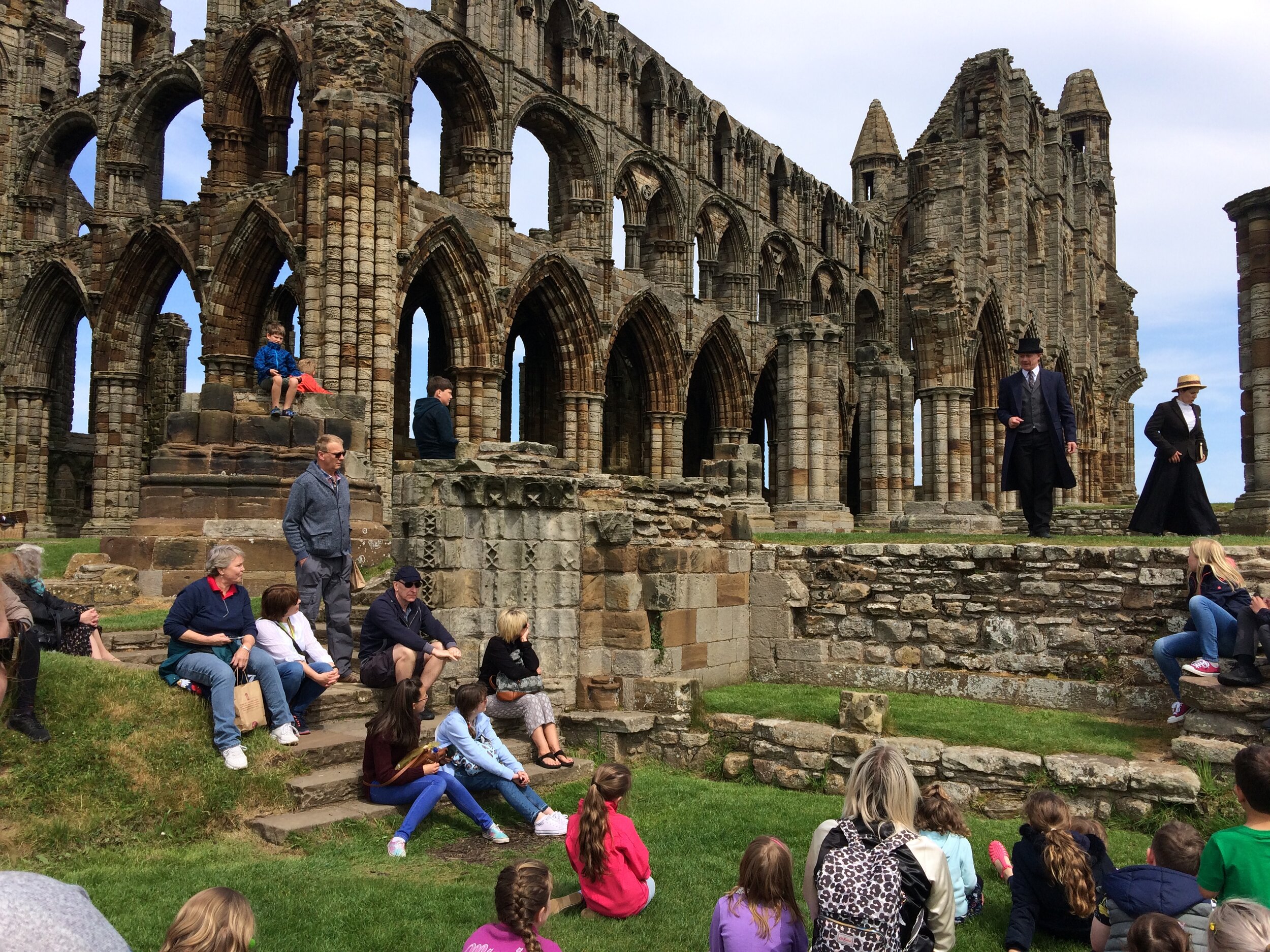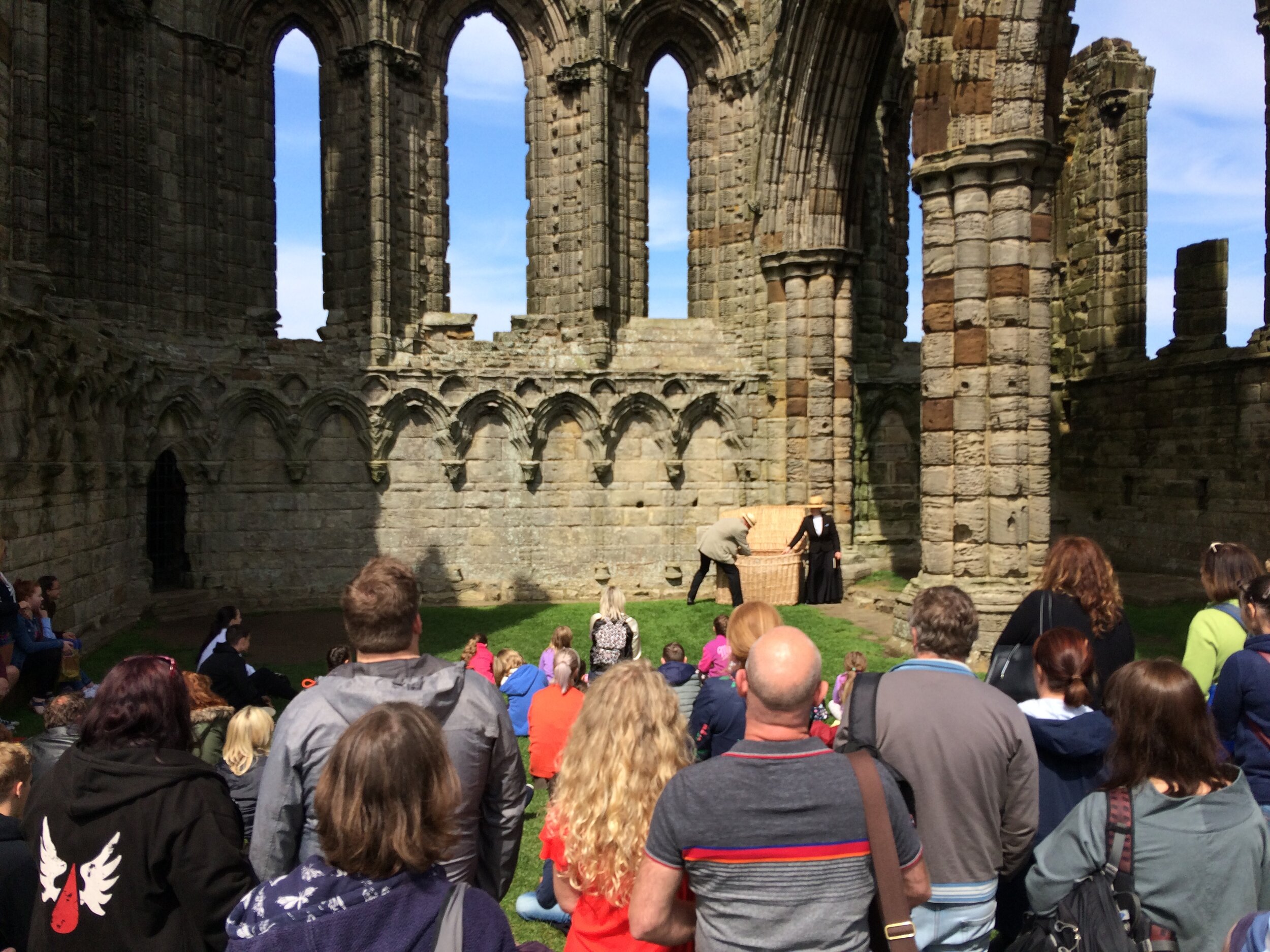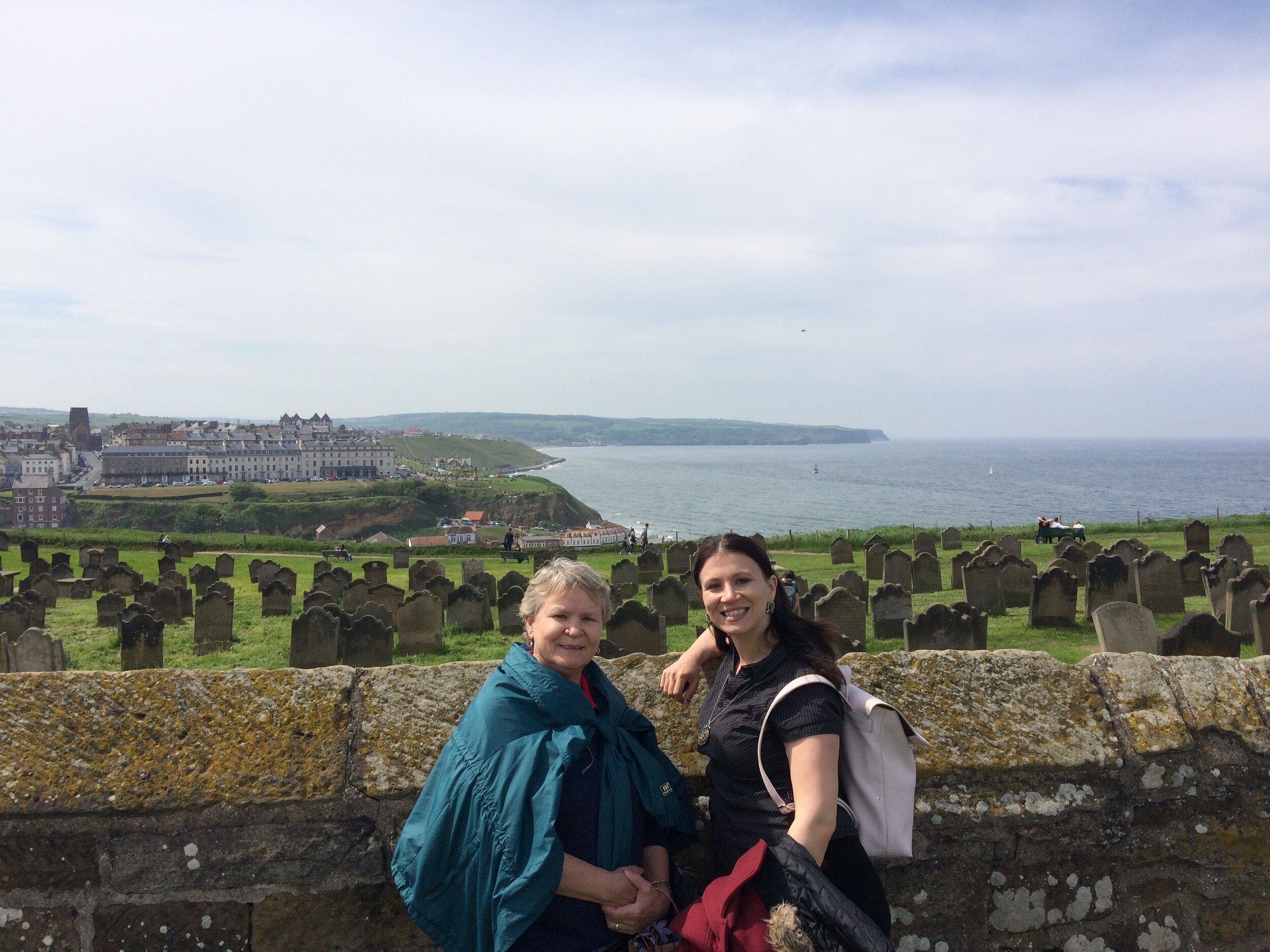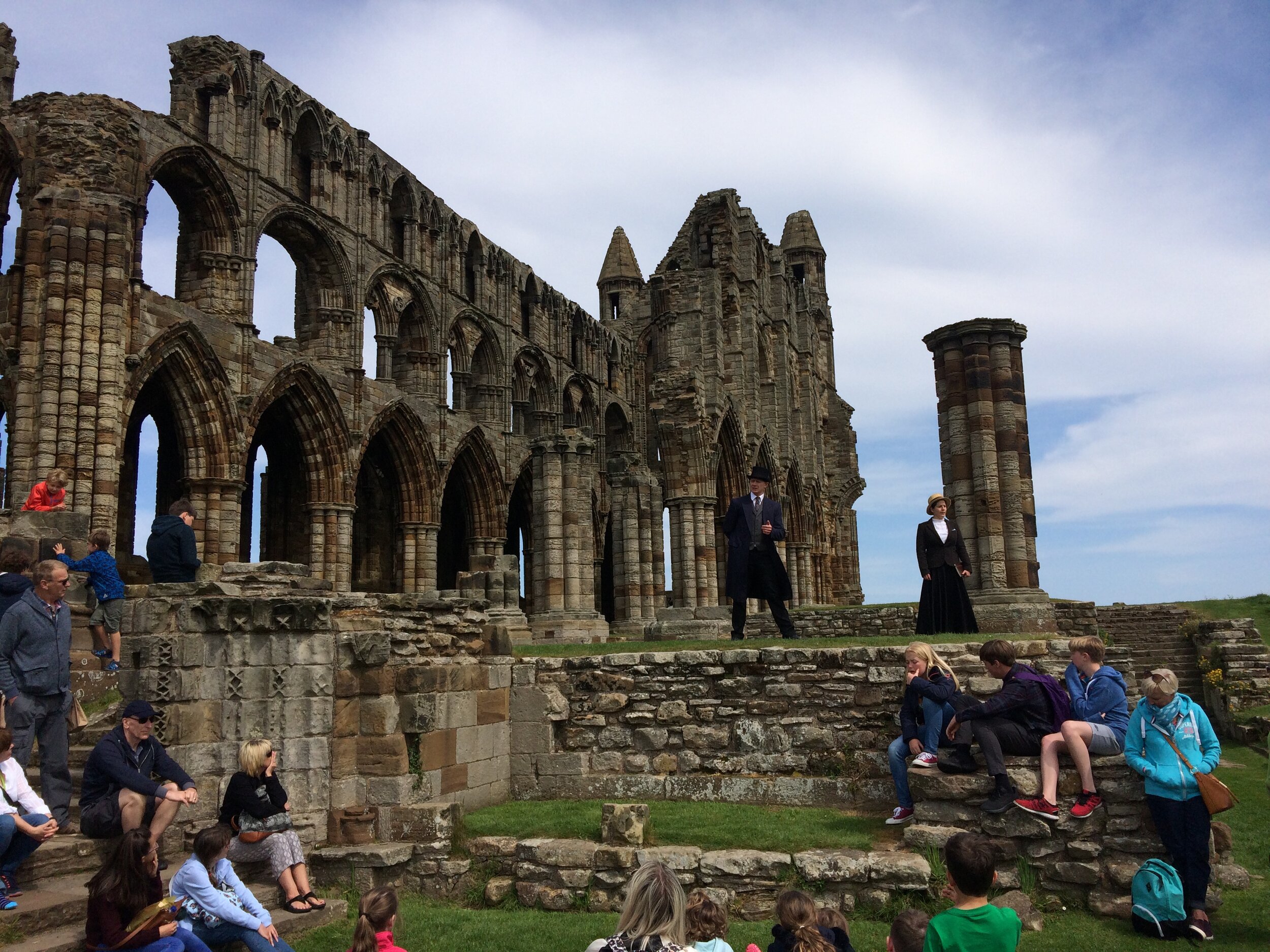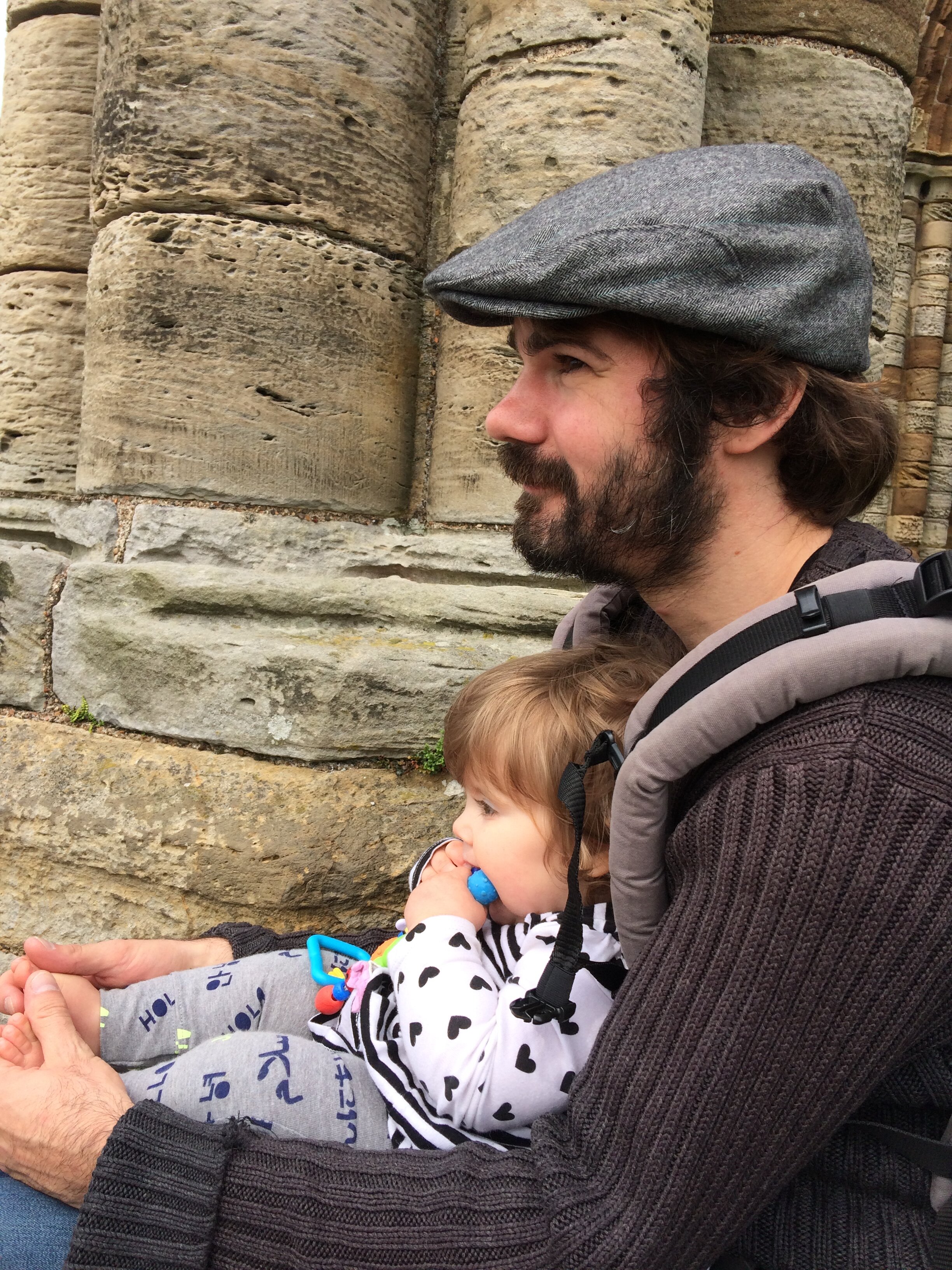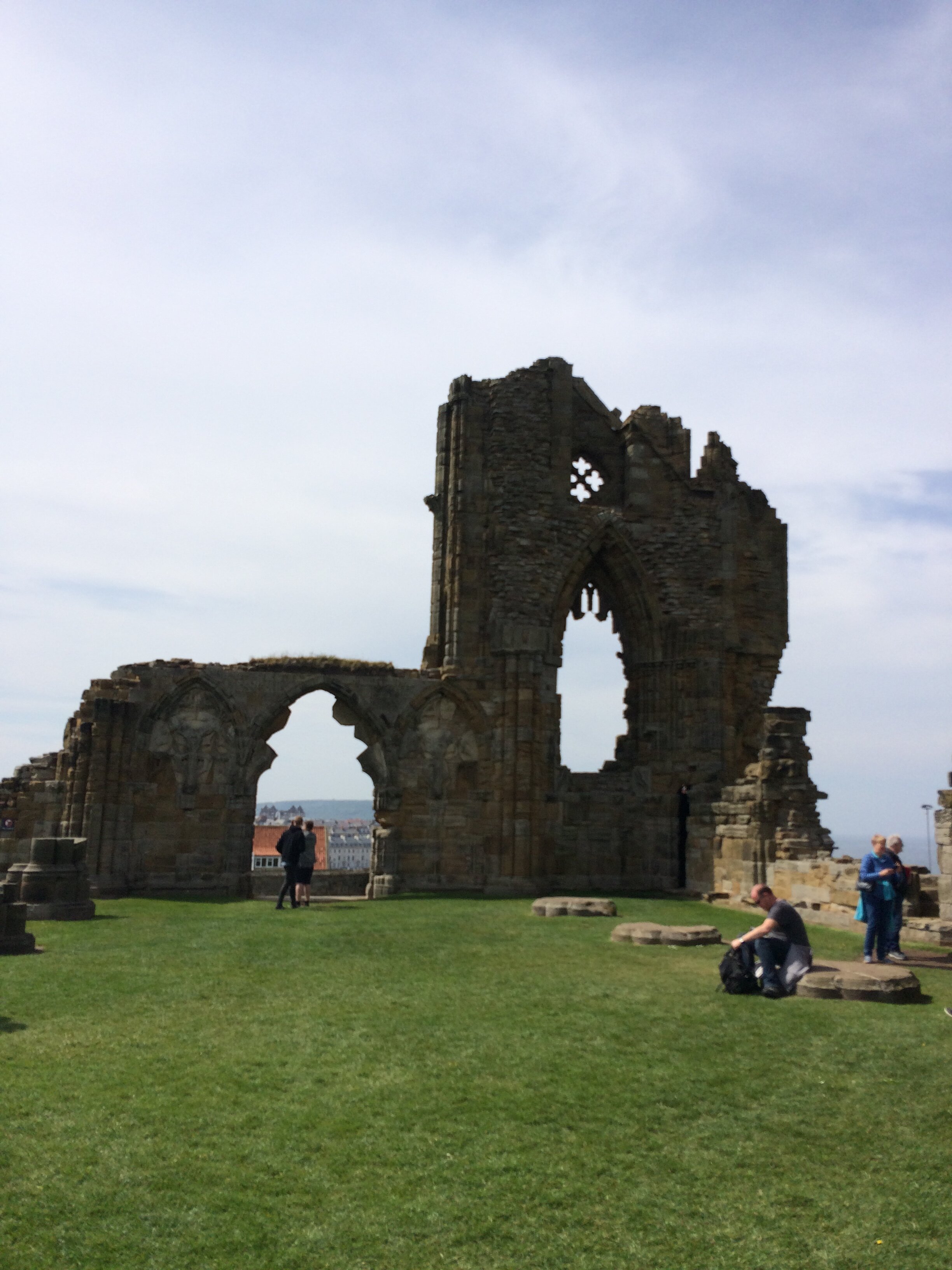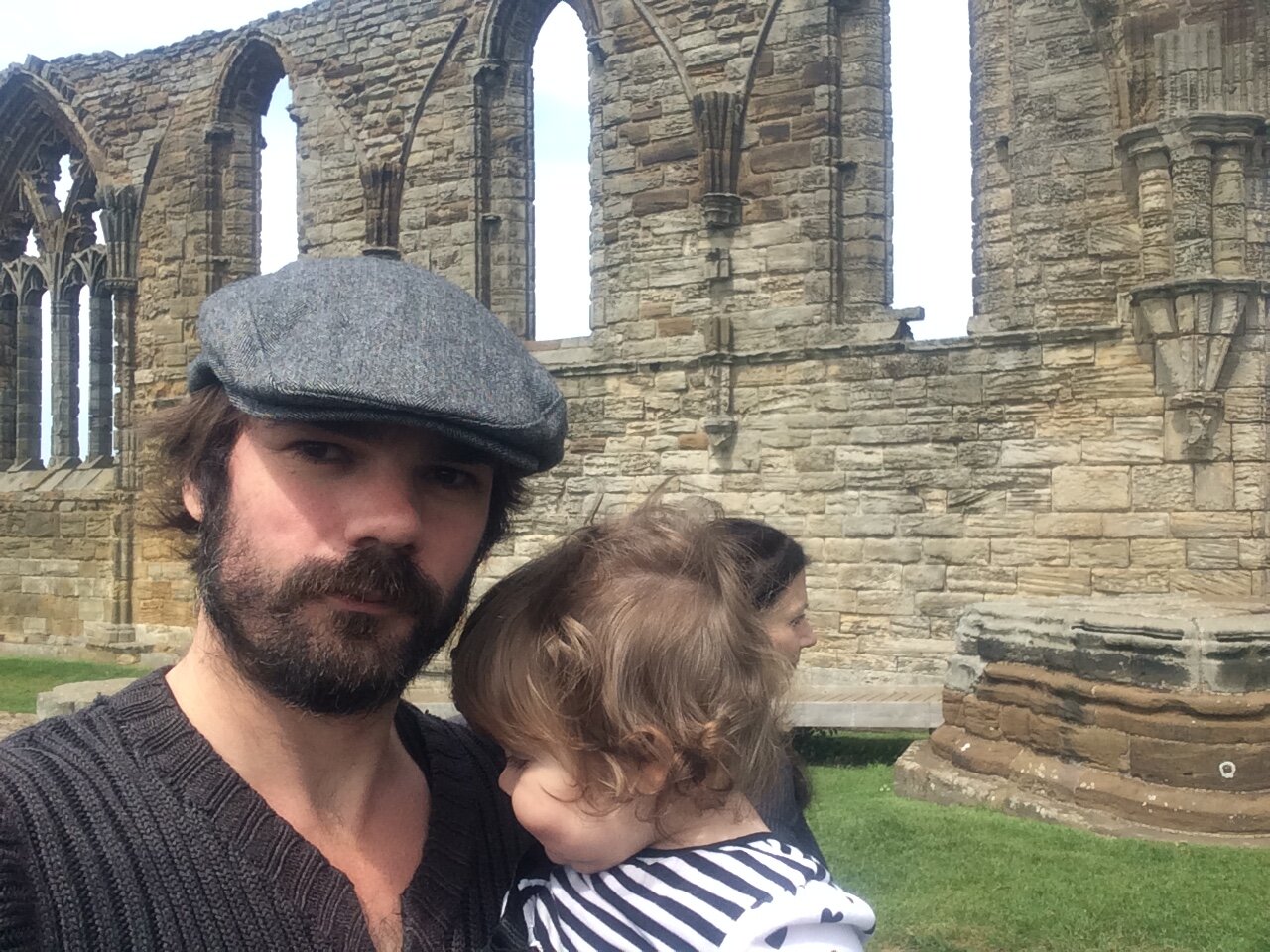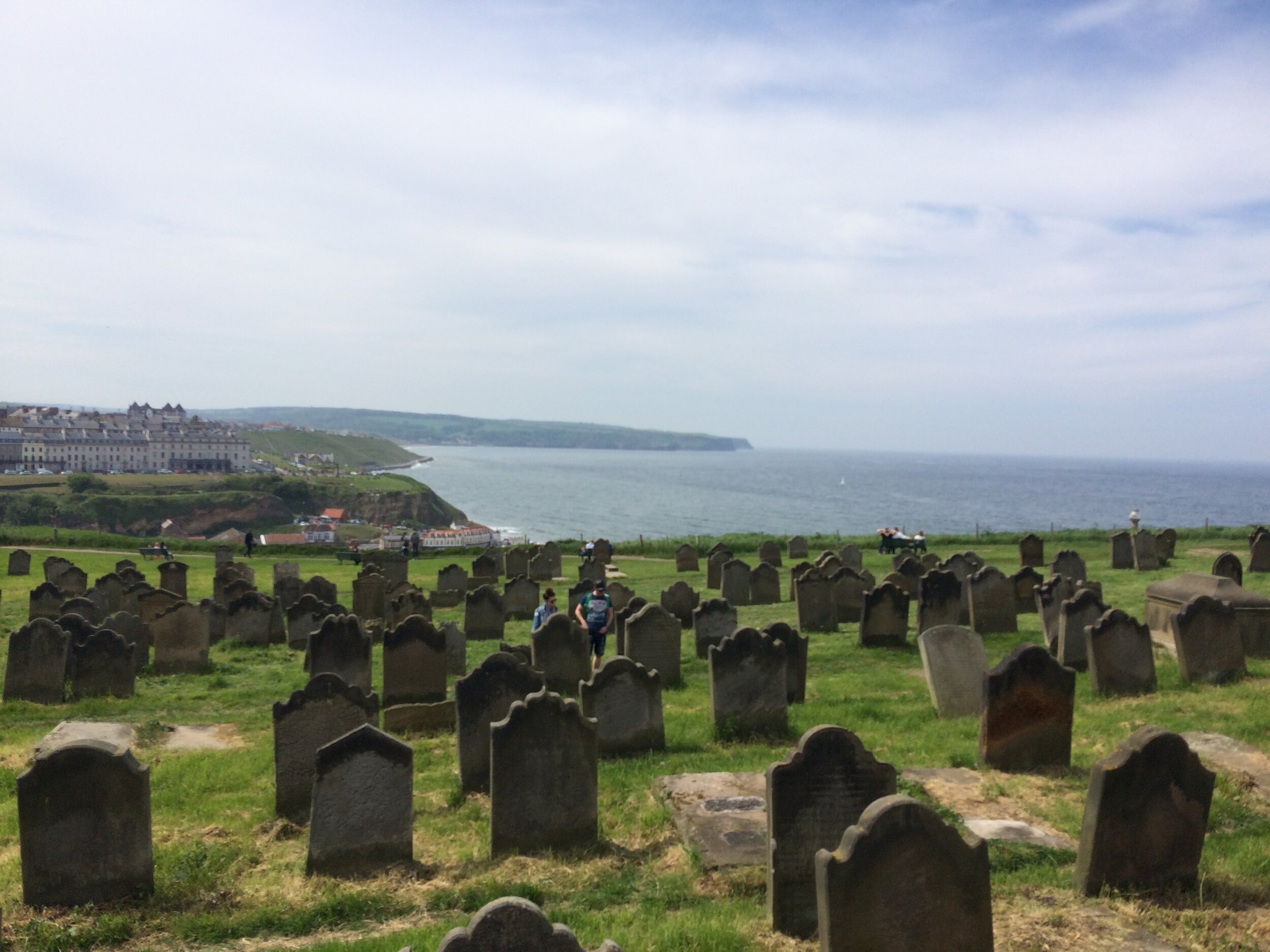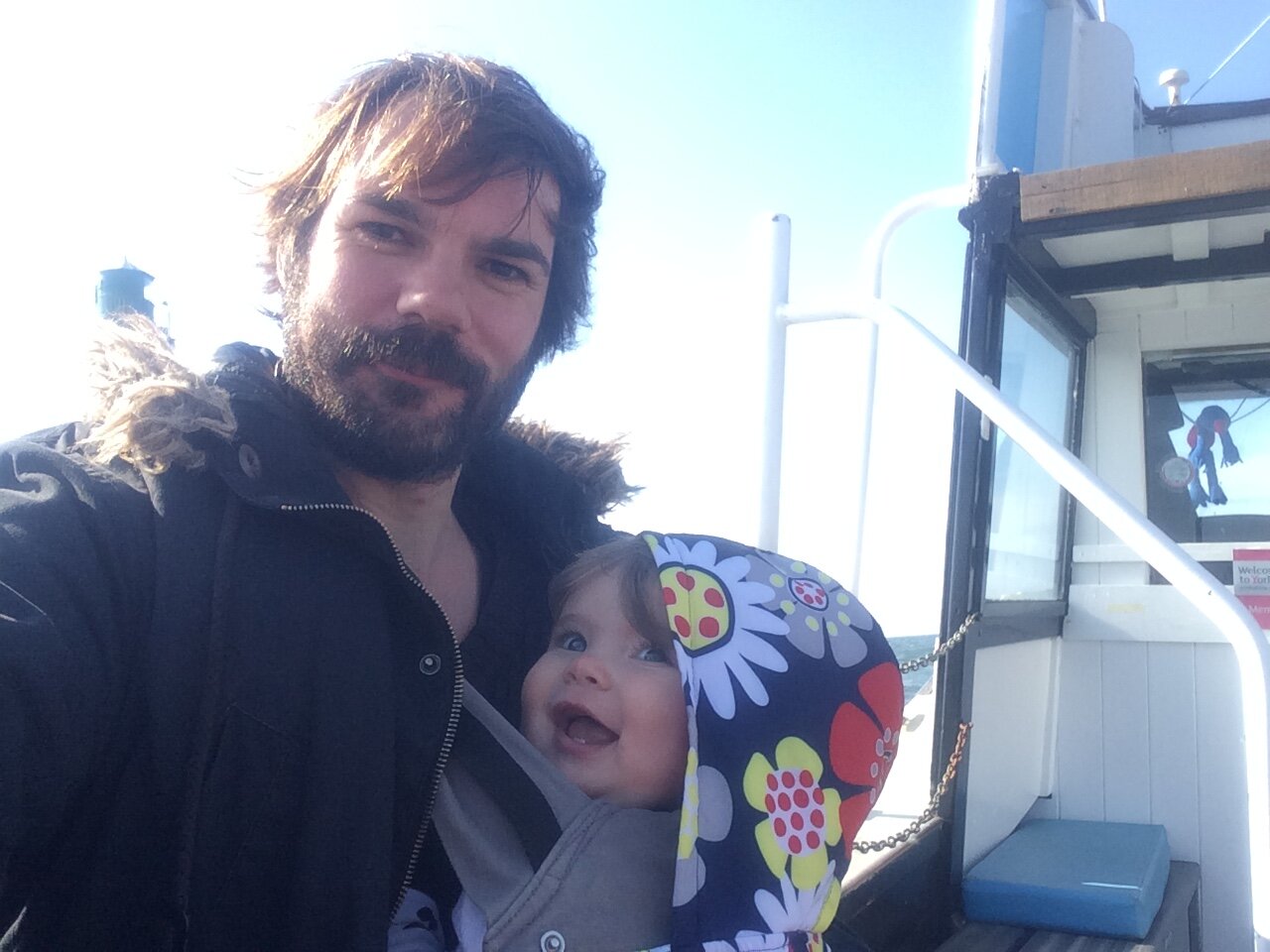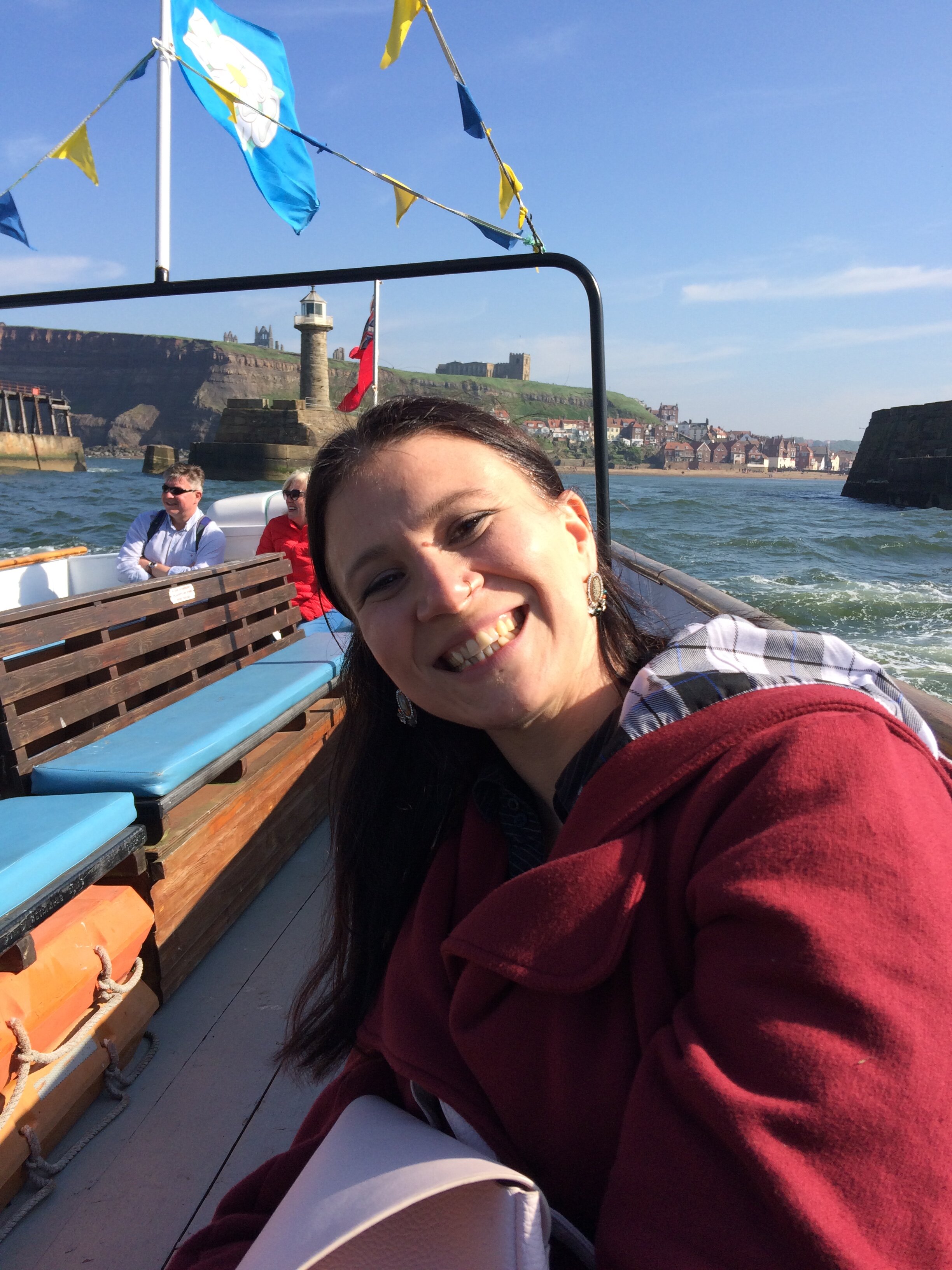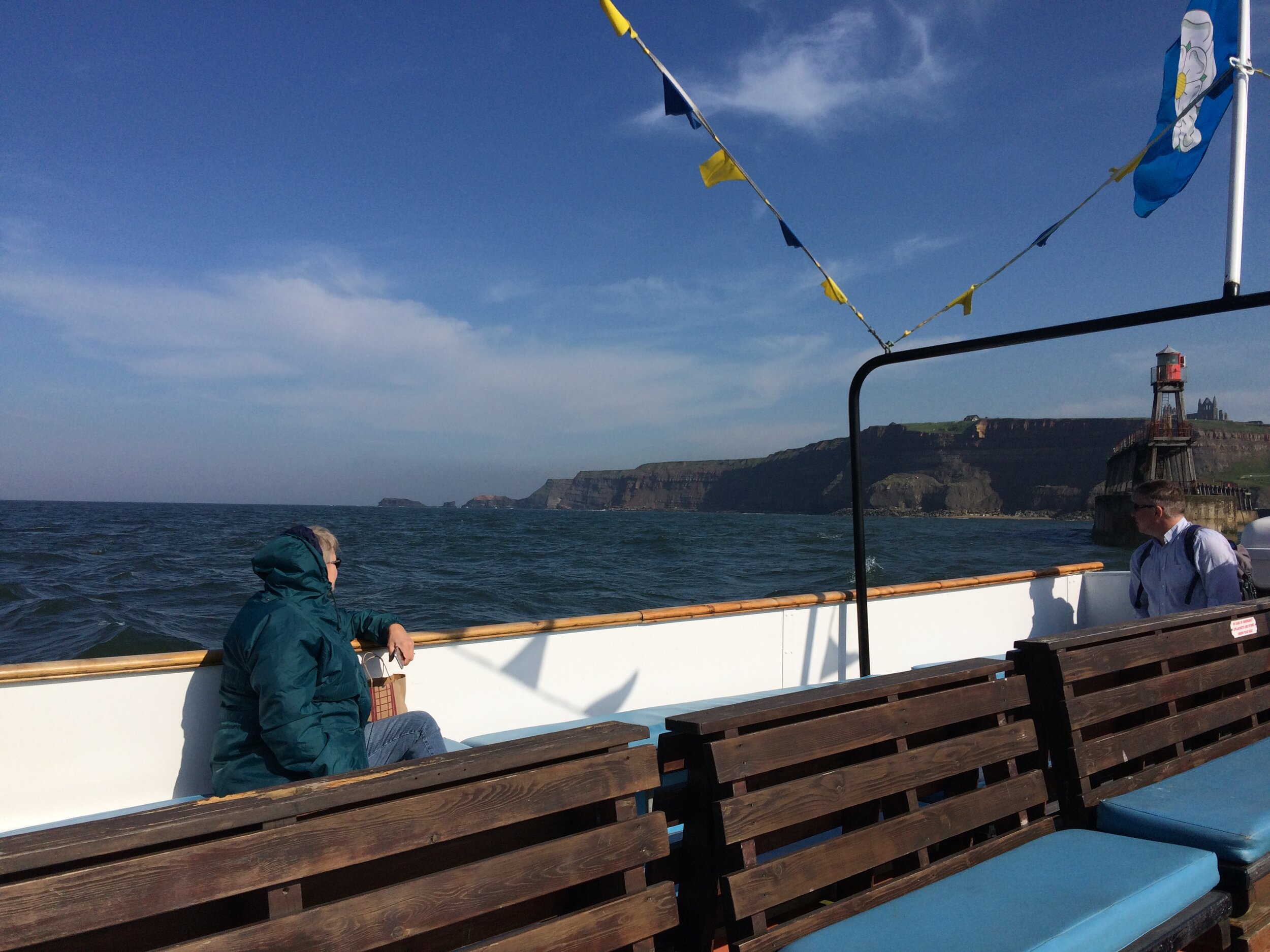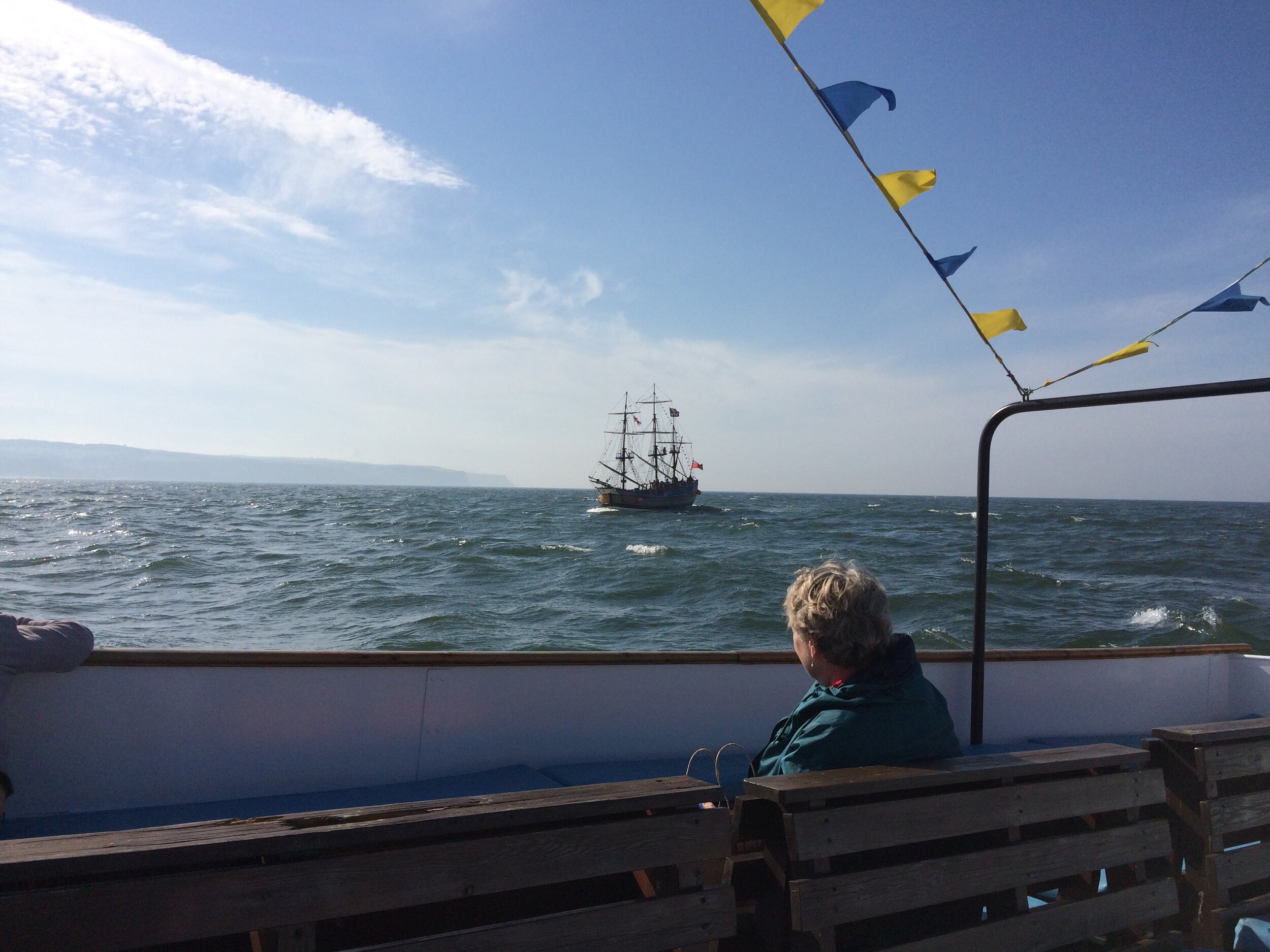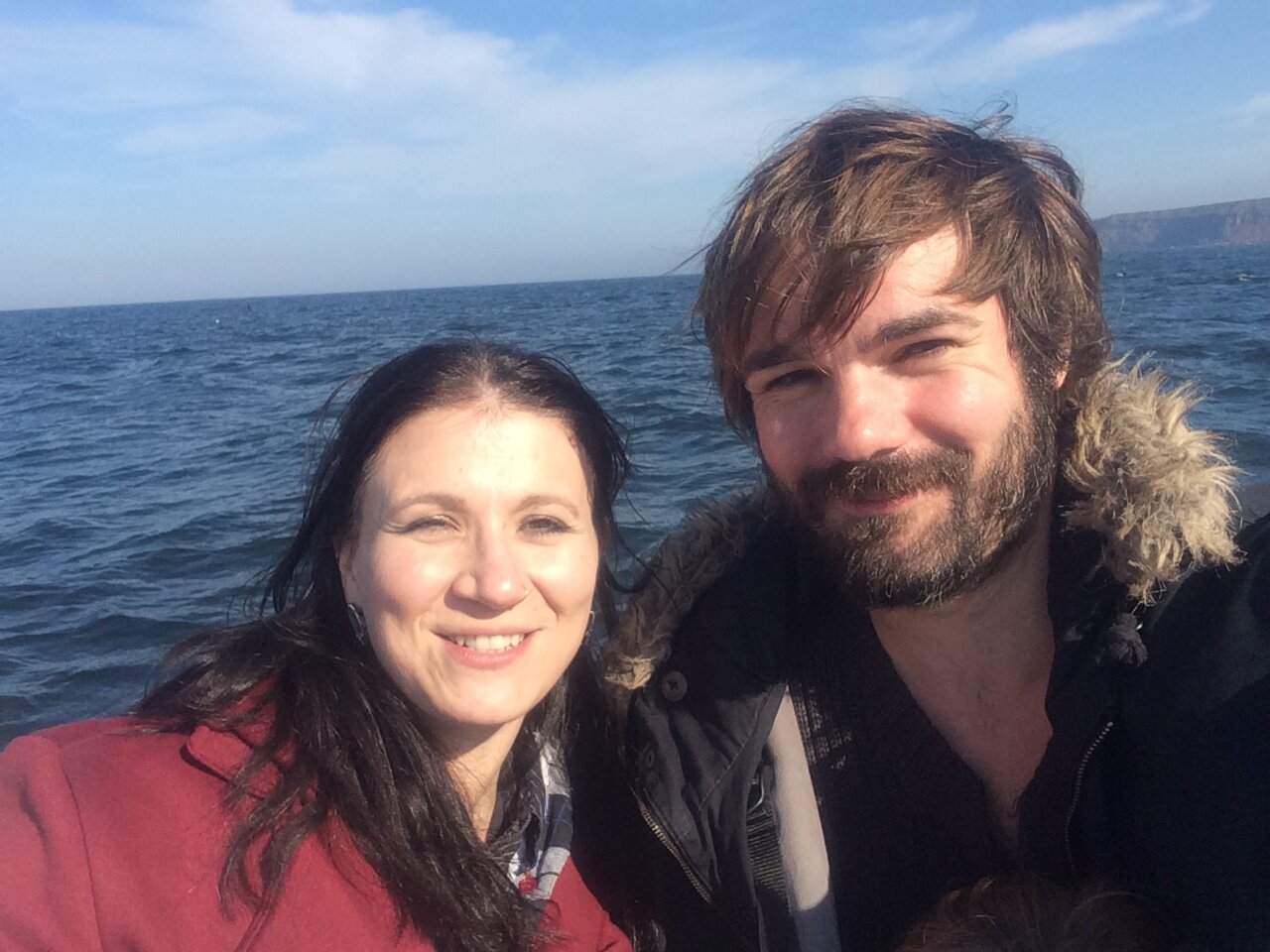There is a destination whispered continuously through the curious circles of horror literature. This is a place steeped in history and legend, famed throughout the known world. We had to see for ourselves. Despite being less than an hour away, we had yet to explore the infamous seaside town of Whitby.
Famed for its Abbey and its associations with blood-sucking demons of darkness, Whitby has become a Mecca for those who enjoy the delights of gothic imagination. Twice a year Whitby hosts a Goth Festival. Heroes of the macabre, mechanical music and monochrome fashion descend on the town to share an appreciation of a subculture much evolved from its primitive beginnings.
The festival, however, would not be for another few months. We chose to venture into the town on an altogether more horrifying weekend… the Bank Holiday.
During the beautiful scenic drive, we mused with wide eyes and electrified minds. Approaching from the stunning North York Moors, we crossed the horizon and peered down upon Whitby. The town is sprawled across steep slopes falling to the mouth of the River Esk, where it empties into the North Sea.
The first evidence of settlement at Whitby appears in the 7th century AD when the Abbey was founded by the Christian King of Northumbria, Oswiu. It saw Viking raids and the rebuilding of monasteries as the town grew and grew. The name Whitby comes from the Old Norse meaning White Settlement. In later history, it became an important maritime centre, where famed figures such as Captain Cook would learn their seamanship. The architecture is delightfully quirky and traditional; the streets are narrow and windy, the views are to die for.
The gem of this great literary centre is, of course, Whitby Abbey. The Abbey ruin sits atop the East cliff as the town’s oldest monument. It was built as an act of thanks following the defeat of Penda, the pagan Anglo-Saxon King of Mercia. Its first Abbess was the royal princess Hild, who was later venerated as a saint. The Abbey was home to Caedmon, the earliest English poet, who cared for animals and was unaware of the gift of words until he miraculously dreamt the art of song. It would be destroyed and rebuilt over the centuries until Henry VIII’s dissolution of the monasteries finally left it to ruin.
We had made the journey along with ArchaeoNana, to enjoy the seaside resort and see what all the fuss was about. As I mentioned, however, we chose the wrong day for a visit. The bank Holiday seemed to be an excuse for mass pandemonium in this little town. As with most coastal hotspots, the usual popular vendors of souvenir shops, ice cream parlours, fast food joints, penny arcades and public houses are prominent. On this day, all were utterly bursting at the seams.
Families crowded the narrow streets, gangs of adults filled the pubs, cars and busses clogged up the chaotic roads. Noise and smog suffocated the air. The searing summer heat did little to alleviate the claustrophobia of it all. Merely seeking suitable parking was beyond stressful. So far, not the incredible adventure we had anticipated.
Fortunately, as we made our way up the 199 steps leading to the Abbey, the enclosed chaos began to evaporate and an open and relaxed atmosphere befell our party. Up here in the heavens, amongst the ancient ruins of the Abbey, it was a different world. The air was fresh, a serene quiet hung over the stone relics. We explored the historic building blocks perched upon the cliff edge. The views over the ocean were sublime, even the busy shuffle of life from the town below appeared as a quaint visual curiosity.
Throughout the ancient world, people have been drawn to this area for the luxury gemstone, Jet. Derived from wood of the Monkey Puzzle Tree, changed under extreme pressure. Jet has been used for jewellery and prized objects since at least the neolithic period.
Thanks to the timing of our visit, we witnessed an incredible immersive performance of Bram Stoker’s mesmerising literary success, Dracula. From within the walls of its inspiration, we followed the characters and tussled on that most epic of journeys. We cowered as Dracula pursued his blood lust. We cheered as Jonathon Harker escaped his clutches and Abraham Van Helsing assisted in defeating the demon.
Our final adventure of the evening came with a choppy boat ride out into the deep blue of the North Sea. The brief maritime excursion offered a viewpoint from which Dracula himself might have first appreciated the gothic splendour of this special site. The waters were particularly rough, it was a nervy journey for us, but one that Audrey found immensely enjoyable!
We squeezed into a small pub on the hill for a farewell drink, the place was rammed and not the most comfortable, but the beer was good and to my delight, we even caught a little of the bank holiday football.
Making our way back to the car, we joined the throngs of tourists leaving town. It was a slow and uncomfortable exit, but once out of town, the traffic eased and we enjoyed the glorious greens of the Moors as the sun set over the horizon and day was overtaken by night...
...into the realm of bloodsucking demons!

